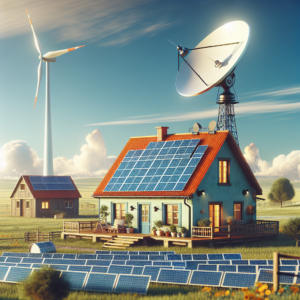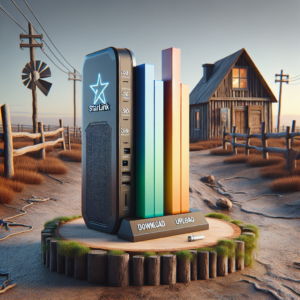
Key Takeaways
Understanding the importance of off-grid solar storage is key to achieving energy independence.
Selecting the right battery type, like lithium-ion or lead-acid, is crucial for system efficiency and longevity.
Sizing your storage correctly ensures you have enough power for your daily needs, even when the sun isn’t shining.
Regular maintenance and monitoring can greatly extend the life of your off-grid solar system.
Adapting to a solar-powered lifestyle involves planning and embracing new habits for energy consumption.
Top Battery Solutions for Off-Grid Solar Storage
| Battery Type | Characteristics |
|---|---|
| Lithium-Ion | – Lightweight, high energy density, longer lifespan |
| – More expensive upfront but compact powerhouses | |
| Lead-Acid | – Reliable, affordable, shorter lifespan |
| – Heavier, take up more space, trusted workhorses | |
| Alternative Tech. | – Saltwater batteries and flow batteries |
| – Unique benefits like environmental friendliness and safety |
Key Considerations for Off-Grid Solar Storage Systems
- Choosing the Right Battery Type:
- Select based on capacity, depth of discharge, and cost considerations.
- Lithium-ion batteries offer higher energy density and longer lifespan but are pricier upfront compared to lead-acid batteries1.
- Sizing Your Storage:
- Calculate daily power usage and ensure a buffer for low solar production days.
- Aim for enough storage to cover three to five days of energy needs1.
- Maintenance for Longevity:
- Regular maintenance is crucial for system longevity.
- Lead-acid batteries require water level checks and corrosion monitoring, while lithium-ion batteries need less hands-on maintenance1.
- Expansion and Upgrades:
- As needs evolve, consider expanding the system with additional panels or batteries.
- Ensure compatibility with existing components and consider incorporating newer, more efficient technologies when upgrading1.
Why Off-Grid Solar Storage Matters
When you’re off the grid, the energy you produce is the energy you’ve got. There are no power lines connecting you to the nearest power plant, no backup from the city’s supply. This is why having a robust solar storage solution is not just beneficial; it’s essential. It’s the difference between having electricity when the sun goes down or during cloudy days, and sitting in the dark.
The Shift to Solar: A Greener Choice
Most importantly, choosing off-grid solar storage is a step towards a greener future. Solar energy is clean, renewable, and abundant. By harnessing the power of the sun, we reduce our reliance on fossil fuels, which are finite and contribute to pollution and climate change. Therefore, by investing in off-grid solar storage, you’re not just securing your energy independence; you’re also contributing to a healthier planet.
Storing Sunshine: The Need for Effective Batteries
Here’s the thing: solar panels are fantastic during the day. But what happens when the sun sets? That’s where batteries come in. They store excess energy produced during the day so that you can use it at night or during periods when the solar panels aren’t generating power. This is why the choice of batteries for your off-grid system is one of the most crucial decisions you’ll make.
Choosing Your Solar Guardian
Think of batteries as the guardians of your solar system. They’re the ones that ensure your lights stay on and your fridge keeps running when the sun isn’t shining. But not all guardians are created equal. There are different types of batteries, and each comes with its own set of strengths and weaknesses.
Lithium-Ion Batteries: Compact Powerhouses
Lithium-ion batteries are like the high achievers of the battery world. They’re lightweight, have a high energy density, and boast a longer lifespan than many other types. This means you can store more energy in a smaller space, and they won’t need to be replaced as often. But all these perks come at a price, and lithium-ion batteries are typically more expensive upfront.
Lead-Acid Batteries: The Trusted Workhorses
Lead-acid batteries, on the other hand, are the seasoned veterans. They’ve been used in off-grid systems for decades, and for good reason. They’re reliable and more affordable than lithium-ion batteries. However, they’re also heavier, take up more space, and have a shorter lifespan, which means they’ll need to be replaced more frequently.
Alternative Technologies: Exploring Cutting Edge Options
Besides that, there are other, less common battery technologies to consider, such as saltwater batteries and flow batteries. These alternatives are making waves with their unique benefits, like environmental friendliness and safety. But they’re still emerging technologies and might not be as readily available or as well-tested as lithium-ion and lead-acid batteries.
A Solar Solution That Fits: Sizing Your Storage
When it comes to off-grid living, one size does not fit all. Sizing your storage correctly is a bit like packing for a trip. You need to bring enough ‘energy supplies’ to last you through, without overpacking and weighing yourself down with unnecessary costs. To figure out the size of the battery bank you need, start by calculating your daily power usage. This involves listing every appliance and device you use, noting how many watts they consume and for how long each day. Once you’ve got your total watt-hours, you’ll have a clearer picture of your storage requirements.
But remember, it’s not just about storing enough power; it’s also about having a buffer for those not-so-sunny days. A good rule of thumb is to have enough storage to cover your energy needs for three to five days. This ensures that even during periods of low solar production, you won’t be left in the dark.
The Heart of the System: Selecting the Right Battery
Now that you know how much power you need to store, it’s time to choose your battery—the heart of your off-grid solar system. This isn’t a decision to be taken lightly, as the right battery can keep your system pumping energy efficiently for years to come. You’ll need to consider factors like capacity, which is the amount of electricity a battery can store, and depth of discharge (DoD), which is how much of the battery’s capacity can be used without damaging it.
Lithium-ion batteries typically have a higher DoD than lead-acid, meaning you can use more of their stored energy. However, if your budget is tight, lead-acid batteries can still be a viable option. Just remember that you might need more of them to achieve the same usable capacity as a smaller number of lithium-ion batteries.
Keeping the Current: Maintenance Tips for Longevity
Just like a garden needs watering and weeding, your solar storage system needs regular maintenance to thrive. For lead-acid batteries, this means checking the water levels and topping them up with distilled water as needed. It also means keeping an eye on the connections to ensure they’re tight and corrosion-free. Lithium-ion batteries require less hands-on maintenance, but you should still monitor them for any signs of issues.
No matter what type of battery you choose, keep them in a cool, dry place, as extreme temperatures can reduce their lifespan. And always follow the manufacturer’s guidelines for care and maintenance. These steps will help you keep the current flowing and your off-grid dream alive for years to come.
Installation and Setup Simplified
Feeling a bit daunted by the prospect of setting up your off-grid solar system? Don’t worry, it’s simpler than it sounds. The key is to approach it step by step. First, you’ll install your solar panels, typically on your roof or a nearby mount. Then, you’ll set up your charge controller, which regulates the power going into your batteries, ensuring they charge correctly and aren’t overcharged.
Next comes the inverter, which converts the DC electricity generated by your panels into the AC electricity that powers most home appliances. Finally, you’ll connect your batteries, following the correct series or parallel wiring to match your system’s voltage requirements. Each component should come with a manual, and it’s crucial to follow the instructions carefully. If you’re ever in doubt, it’s wise to consult a professional.
Going Off the Grid: An Installation Overview
Going off the grid is a big step, but breaking it down into manageable parts makes it less intimidating. Start by choosing the right location for your solar panels—they should have maximum exposure to sunlight, with no shading. Then, securely mount your panels and connect them to your charge controller. The controller should be close to your batteries to minimize voltage drop.
From there, you’ll connect the controller to your batteries, ensuring you’re using the correct cables and fuses for safety. Finally, hook up your inverter, and you’re ready to flip the switch. Remember, safety first: always shut off the main power before working with electrical components, and wear protective gear when necessary.
From Panels to Power: Connecting Your Components
Connecting your solar panels to your batteries is like linking a series of rivers to a reservoir. The water flows from the panels, through the charge controller, and into the battery bank, where it’s stored until needed. Use thick cables to minimize energy loss and ensure everything is waterproof and weatherproof, especially if components are outside.
Most importantly, your system should be grounded to protect against power surges and lightning strikes. This is crucial for the safety of your system and your home. With everything connected correctly, your off-grid solar system will be a seamless flow from sunlight to usable power.
DIY Troubleshooting: Common Issues and Fixes
Even the best systems can have hiccups, but with a little know-how, you can troubleshoot common issues. If your batteries aren’t charging properly, check your connections and the charge controller settings. Panels not producing power? Make sure they’re clean and free from shading. Inverter issues often come down to improper installation or a mismatch with the system’s voltage.
Keep a close eye on your system’s performance, and you’ll soon become adept at diagnosing and fixing small problems before they become big ones. And remember, there’s no shame in calling in a pro when you’re out of your depth.

Living with Your Off-Grid Solar System
Living off the grid with solar power isn’t just about the setup; it’s a lifestyle. It means being mindful of your energy consumption and understanding the rhythms of nature. You’ll become more aware of the weather, the seasons, and how they affect your power supply. It’s about adapting and learning to make the most of the energy you have.
Monitoring Your System: Keeping an Eye on Performance
Monitoring your system is like keeping a finger on the pulse of your home. It’s how you ensure everything is running smoothly and efficiently. Most charge controllers and inverters come with monitoring capabilities, either with a display on the unit or through an app on your phone. Keep an eye on your energy production and consumption, and you’ll start to see patterns that can help you optimize your usage.
For example, if you notice your batteries are consistently low by evening, you might decide to run energy-intensive appliances like the washing machine during the day when your panels are producing plenty of power. This proactive approach to energy management will help you make the most of your off-grid system.
Life in the Green Lane: Adapting to Solar Power Living
Embracing off-grid solar living means embracing a new normal. You’ll learn to prioritize energy usage, running appliances when the sun is shining and conserving power when it’s not. It’s about finding a balance and making small adjustments, like switching to energy-efficient LED lighting or investing in a solar oven.
Living with solar power is incredibly rewarding. There’s a sense of freedom and self-sufficiency that comes from generating your own electricity. And as you adapt, you’ll find that these changes aren’t just good for the planet—they’re good for your soul, too.
Expansion and Upgrades: Growing Your Solar Setup
As your needs evolve, so might your off-grid solar system. Expanding your setup can be as simple as adding more panels or batteries, but there are a few things to keep in mind. First, ensure your charge controller and inverter can handle the increased load. If not, they may need an upgrade too. Also, when adding new batteries, it’s best to add ones with the same capacity, age, and type as your existing batteries to prevent imbalance in the system.
Upgrading can also mean incorporating new technologies or more efficient components. Solar technology is advancing rapidly, and newer panels might generate more power in the same amount of space as your old ones. Keep an eye on the market, and when it makes financial and practical sense, consider making the switch to newer, more efficient technology.
Remember, any changes to your system should be done with careful planning and consideration. It’s usually a good idea to consult with a professional before expanding or upgrading your solar setup to ensure compatibility and safety.
Frequently Asked Questions (FAQ)
When diving into the world of off-grid solar, questions are bound to arise. Let’s tackle some of the most common queries to help you navigate your solar journey with confidence.
How Much Storage Do I Need for My Off-Grid Solar System?
The amount of storage you need is directly tied to your daily energy consumption and the climate in your area. Start by calculating your daily power usage in watt-hours. Then, consider how many days you want to be covered in case of low solar production. A general guideline is to have enough storage for three to five days. For example, if your daily usage is 2 kWh, you’d want a battery bank that can hold between 6 to 10 kWh.
Additionally, it’s wise to factor in a buffer for efficiency losses and unexpected usage spikes. This will help ensure you have enough power to meet your needs, even on the cloudiest days.
Can I Mix Different Types of Batteries in My Solar Storage?
It’s not recommended to mix different types of batteries within the same solar storage system. Different battery chemistries have varying charge and discharge rates, capacities, and voltage levels. Mixing them can lead to reduced performance, shortened battery life, and potential safety hazards. Stick with one type of battery to ensure your system operates efficiently and safely.
What is the Lifespan of Off-Grid Solar Storage Batteries?
The lifespan of solar storage batteries varies depending on the type, usage, and maintenance. Lithium-ion batteries can last between 5 to 15 years, while lead-acid batteries typically last 3 to 7 years. Proper maintenance, such as keeping batteries at the correct temperature and not discharging them too deeply, can help maximize their lifespan.
How Do Weather Conditions Affect Solar Battery Efficiency?
Weather conditions can significantly impact the efficiency of your solar batteries. Extreme temperatures, both hot and cold, can reduce battery performance and lifespan. For example, high temperatures can cause batteries to overheat, leading to faster degradation. Conversely, cold temperatures can slow down the chemical reactions within the batteries, reducing their capacity. It’s important to protect your batteries from extreme weather by insulating them or installing them in temperature-controlled environments.
Is Off-Grid Solar Storage a Cost-Effective Solution?
Off-grid solar storage is an investment that can lead to significant savings over time. While the upfront costs of solar panels, batteries, and other components can be substantial, the long-term savings on energy bills and the potential for increased property value make it a cost-effective solution for many. Additionally, off-grid solar storage provides energy security and independence, which is invaluable for those living in remote areas or looking to reduce their environmental impact.







